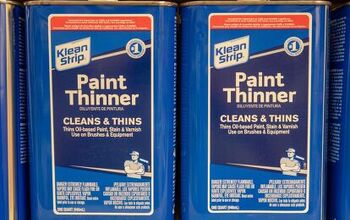How Many Layers Of Paint Can You Put On A Wall? (Find Out Now!)

The paint one uses on interior and exterior walls says a lot about them as a homeowner. Specifically, one can discern how creative someone is and what their style preferences are from the paint they use.
For this reason, most homeowners deliberate before deciding on which kind of paint to use, and often in the midst of deliberation one wonders whether or not multiple layers of paint can be added to a single wall.
Such is the question this article answers, and other important information about painting interior and exterior walls will be included as well.
In general, two to three layers of paint can be applied to an interior wall. You should not exceed three layers, as doing so can yield negative consequences and largely amounts to a waste of money. When painting exterior walls, applying two coats is the standard. Always apply primer before putting paint on a wall, as this will help the paint hold.
Do You Need to Hire a Paint Contractor?
Get free, zero-commitment quotes from pro contractors near you.

Why Multiple Layers of Paint Are Used
There are a few good reasons why multiple layers of paint are added to a single wall. These are briefly explained below:
Visual Appeal
If you want to bring out the full character of the paint, then applying multiple layers is a good move. If you’re using low-quality paint, then the paint may peel quickly and leave an uneven finish. In this case, you would need another coat.
But even if you’re using high-quality paint, you’ll need to put on another coat if you want the paint to be bold. Keep opaqueness in mind when applying a second coat.
Reinforcement
Applying two coats of paint to a single wall will also ensure the paint lasts longer. The second coat will act as a durable reinforcement. If you apply a second layer, you won’t have to spend money on painting for a long time.
Longer Warranty
In some cases, if you apply a second coat of paint, you can actually get a longer warranty on the paint.
Why More Paint Is Required Sometimes
Adding multiple layers of paint is usually required when low-quality paint is used. Low-quality paints don’t cover well as high-quality paints do, and if you’re using low-quality paint then you can expect to be painting all day.
High-quality paints make use of the best pigments and resins, and since they don’t include a lot of solvents, the paint is thicker. In short, if you open up a can of paint and you can see right through it, know you’re working with some low-quality paint.
Covering the Same Color
Painting a wall with the preexisting color may seem like the simplest option, but this can actually be messed up quite easily. There are so many kinds of paints out there, and even paints that have the same name can be wildly different if the brands aren’t the same.
Therefore, when you want to apply the preexisting color, you need to know for sure the paint that’s to be applied is in fact the same color.
Often, paint fades, especially when it’s exposed to sun and other factors for a long time. If you’re using the exact same color, then the fading will be nullified and lushness will be restored.
Light vs. Dark
When covering a light paint with a dark paint, and vice versa, multiple coats will be needed. You should, however, do a trial run first on a small section of wall, as the result will determine whether or not primer is needed.
If primer is needed, then three coats will be going on the wall (the primer being one of them). In short, the darker/lighter the original paint is, the more overlaying coats will be needed to nullify it.
Orange, Yellow, and Red
When the preexisting paint is orange, yellow, or a light shade of red, then you’ll need to use a grey primer before applying new paint. The primer will help the paint dry properly and effectively cover up the preexisting paint.
After you apply the primer, you’ll need to let it sit for four to five hours. Once this time has passed, the new paint can be applied. Don’t apply the paint too soon, or else it’ll peel quickly.
Note: Mid-tone red and orange paints are infamously hard to cover. If your walls are painted with these colors, getting help from a professional painter is a good idea.
What About Exterior Walls?
When it comes to exterior walls, two coats is the standard. You should never cut corners when painting exterior walls, as these walls will be exposed to the elements. If you don’t use enough paint, then you’re in for a world of unwanted consequences.
Despite their best efforts, a lot of DIYers don’t apply exterior paint correctly, and such is why it’s best to hire a professional painter when you want to ensure your exterior walls are painted properly.
DIYers often don’t prepare the exterior walls adequately before painting, and this is one reason why they get undesirable results. An exterior wall must be pressure washed, cleaned, and primed before painting can commence.
If you don’t prepare properly, you’ll spend more money in the long run, as repairs and repainting will be required.
What About Ceilings?
You should only use high-quality paint when painting a ceiling, as using high-quality paint will avoid headaches down the road. You’ll only need one coat of paint when painting a ceiling, but again using primer first is highly recommended.
Most ceilings are painted white. Therefore, if you’re noticing discoloration, then it’s likely there’s a leak somewhere above the ceiling. Discoloration can also be caused by other factors, but leaking, rusty water is the most common culprit.
Do You Need to Hire a Paint Contractor?
Get free, zero-commitment quotes from pro contractors near you.

Painting Technique
To ensure a good result, you should apply the paint in the same way the first coat was applied. First, neatly paint the edges.
When all the edges are done, it’s time for the roller. Paint to form a large W on the wall. Next, fill in with both upwards and downwards rolling.
If you don’t know how the preexisting paint was applied, this is when you should get a professional painter to help you.

Matt loves everything DIY. He has been learning and practicing different trades since he was a kid, and he's often the first one called when a friend or family member needs a helping hand at home. Matt loves to work with wood and stone, and landscaping is by far his most favorite pastime.
More by Matthew Mountain

























![10 Most Dangerous Neighborhoods in Baltimore [Updated]](https://cdn-fastly.upgradedhome.com/media/2023/07/31/9075655/10-most-dangerous-neighborhoods-in-baltimore-updated.jpg?size=350x220)

